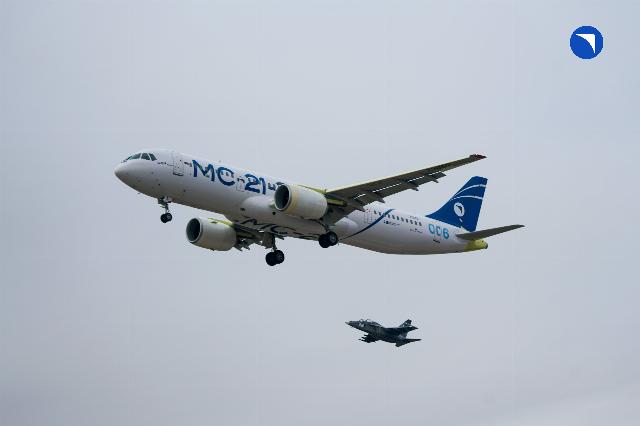Another import-substituted sample of the Russian MC-21 medium-range aircraft took to the skies from the airfield of the Yakovlev Irkutsk Aviation Plant (part of the Rostec State Corporation UAC). The operation of new domestic PD-14 systems and engines was tested on board. This is the second import-substituted aircraft to take off. The aircraft will join the certification testing program in addition to the experienced MC-21.
The flight was performed by a crew consisting of test pilots Andrey Voropaev and Oleg Mutovin, as well as leading flight test engineers, flight operators Anton Kuznetsov and Grigory Kudryashov. The plane was in the air for about one hour, reaching speeds of up to 500 km/ h and an altitude of up to 3,500 m. Crew commander Andrey Voropaev stated that the flight mission was completed in full, and all domestic systems were working normally.
The aircraft will join the certification testing program along with the MC-21 prototype, partially equipped with new Russian systems and assemblies, which made its first flight in a new guise on April 29, 2025.
"The tremendous work of engineers, designers, and testers at Rostec State Corporation is behind this flight. In order for new domestic airliners to start transporting passengers in the near future, serial boards are being assembled at the Irkutsk Aviation Plant in parallel with certification. Deliveries to airlines are planned to begin after the completion of certification tests and approval of their results by the Federal Air Transport Agency," said Vadim Badekha, CEO of UAC.
Earlier, the aircraft's final assembly workshop replaced imported components and systems with domestic ones. In particular, the cockpit controls, control system drives, the wing mechanization movement system and the stabilizer adjustment mechanism, the avionics complex (avionics), the integrated air conditioning system, the integrated system for collecting, monitoring, processing and recording flight information, the wheel braking system, the main and auxiliary power plants, the fuel system, wheels, tires, and more.
Then, in the flight test department of the Irkutsk Aviation Plant, specialists checked the fuel system, launched auxiliary and main power plants, as well as tested the aircraft's systems and equipment with the engines running.
The aircraft became a milestone machine in the MC-21 program. He was the first to receive a wing made of domestic composite materials, which successfully passed a full range of tests.
"The MC-21 was created for the most demanded segment of the passenger transportation market. Combined with PD-14 engines and Russian systems that have proven the necessary technical characteristics, the MS-21 is able to meet the needs of Russian airlines. Our aircraft manufacturers have done a great job to achieve Russia's technological sovereignty," said Gennady Abramenkov, Deputy Minister of Industry and Trade of the Russian Federation.
The MC-21 is a new generation medium–haul passenger aircraft. The liner was created on the basis of the latest developments and is focused on the most demanded segment of the passenger transportation market. Advanced aerodynamics, PD-14 engines manufactured by the United Engine Corporation and the latest generation systems provide it with high flight performance.
"PD-14 serial aircraft engines combine advanced technologies and modern design solutions, which ensures their reliable operation and flight safety of domestic aircraft. Together with the UAC, we continue to address the issue of import substitution in the aircraft and engine industry to ensure technological sovereignty. The creation and start of flight tests of another prototype of the MC-21 aircraft with PD-14 power plants demonstrates successful work in this direction," said Alexander Grachev, Director General of the UEC, member of the Bureau of the Board of the All–Russian industrial employers' association Union of Machine Builders of Russia.
PD-14 is the first new generation aircraft engine created in modern Russia. While working on the PD-14, UEC designers implemented 16 critical technologies: new materials, coatings, and design solutions were created. The engine was certified in 2018.

